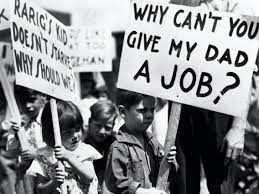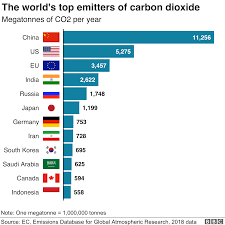Data, Data, Data, Is the Answer to the Problem for Decision-Makers
All the world problems can be solved, IF. We look at the facts. The core factored that is causing the problem. There would be no guessing. Now that we’ve identified the problem, let’s get to work on resolving it.
Without accurate information or data, whoever is in charge can say it is not my fault. I only did what seemed to be right. You cannot blame me, I only followed the facts.
An easy excuse to not get anything done, you can always blame the messenger.
So the problem grows and grows; now it cannot be fixed. What a shame.
Four Steps to Fixing Your Bad Data
Africa’s education crisis seldom makes media headlines or summit agendas and analysis by the Brookings Center for Universal Education (CUE) explains why this needs to change. With one-in-three children still out of school, progress towards universal primary education has stalled. Meanwhile, learning levels among children who are in school are abysmal. Using a newly developed Learning Barometer, CUE estimates that 61 million African children will reach adolescence lacking even the most basic literacy and numeracy skills. Failure to tackle the learning deficit will deprive a whole generation of opportunities to develop their potential and escape poverty. And it will undermine prospect for dynamic growth with shared prosperity. Read More:
SOURCE: Brookings
The Facts are the Facts. Or are they?
How is data gathered to determine the world’s most pressing issue? Who is in charge of keeping us updated? Is that individual or method the best we can do with what we have?
Data is used to make the majority of economic, social, and environmental predictions. Surveys, censuses, and man-made technologies are being used to collect the data.
As a result, these processes influence all of the world’s most critical decisions. We have confidence in the system, good or poor. Unfortunately, the majority of the information in these systems is outdated. They are three, four, or five years old, respectively.
Therefore, we rely on what can happen, if this happens based on the data we have. Keeping our fingers cross it works.
Better data, better policy making
Governing is about delivery. The challenge of government is to improve the quality of life of citizens. “Are you better off today than you were four years ago?” has been a recurrent refrain in quadrennial American presidential campaigns and is a question that is just as relevant in the African political context. To meet this challenge, a government has to come up with a clear and coherent set of ideas—a vision—and use available resources and instruments as efficiently as possible to produce the results that citizens expect. The risk taking involved in articulating and defining a progressive vision for the future is what defines great leadership. Achieving that vision as effectively as possible requires effective risk management—in other words, good governance. Read More:
SOURCE: Mohamed Ibrahim of Mo Ibrahim Foundation
Out of Date
The stock market works like this: buy or sell, buy or sell, buy or sell, buy or sell, buy or sell, buy or sell, buy or sell. You make a purchase based on the future from a trend analysis. Will the federal funds rate rise or fall? What factors will influence this decision? You need accurate data. The best data money can buy.
Nothing and I mean nothing, in the world moves forward without raw, predictable data. Anything you purchase, sell, or own must have a value.
And data determines that value, now and in the future. There can be no guarantee of a predictable outcome without that information. If you live in a glasshouse, you better hope it does not rain rocks.
We must trust the data will lead us to a predictable outcome. However, if the data is incorrect or outdated, everything can go wrong.
That explains why over 130 nation’s education systems are failing, and millions of lives are wrecked year in year out. Blame it on bad data.
The Stock Market Crash of 1929
The financial outcome of the crash was devastating. Between September 1 and November 30, 1929, the stock market lost over one-half its value, dropping from $64 billion to approximately $30 billion. Any effort to stem the tide was, as one historian noted, tantamount to bailing Niagara Falls with a bucket. The crash affected many more than the relatively few Americans who invested in the stock market. While only 10 percent of households had investments, over 90 percent of all banks had invested in the stock market. Many banks failed due to their dwindling cash reserves. This was in part due to the Federal Reserve lowering the limits of cash reserves that banks were traditionally required to hold in their vaults, as well as the fact that many banks invested in the stock market themselves. Eventually, thousands of banks closed their doors after losing all of their assets, leaving their customers penniless. While a few savvy investors got out at the right time and eventually made fortunes buying up discarded stock, those success stories were rare. Housewives who speculated with grocery money, bookkeepers who embezzled company funds hoping to strike it rich and pay the funds back before getting caught, and bankers who used customer deposits to follow speculative trends all lost. While the stock market crash was the trigger, the lack of appropriate economic and banking safeguards, along with a public psyche that pursued wealth and prosperity at all costs, allowed this event to spiral downward into a depression. Read More:
Source: OpenStaxCollege

A Right Way and a Wrong Way
The World Top 20 Project is our solution to solving the data crisis. The project’s goal is to locate, update, and monitor over 200 countries’ educational systems from early childhood to college graduation in 2030. By creating and building a new open-source international database for UN nations.
The World Top 20 Project is part of the UN’s second global movement (The Sustainable Development Goals – SDG) to strengthen human rights, environmental conditions, and economic development in developing countries.
What are the Sustainable Development Goals?
The Sustainable Development Goals (SDGs), also known as the Global Goals, were adopted by all United Nations Member States in 2015 as a universal call to action to end poverty, protect the planet and ensure that all people enjoy peace and prosperity by 2030.
The 17 SDGs are integrated—that is, they recognize that action in one area will affect outcomes in others, and that development must balance social, economic and environmental sustainability. Read More:
Source: United Nations Development Programme

The World Top 20 Project was created and designed by NJ MED. An American non-governmental organization that offers market analysis and creative programming design services to local, national, and international educational organizations from early childhood to post-secondary education.
To create the new international education database, the Project works with a volunteer network of high school and college students, their parents, teachers, and educators to collect data from communities, schools, and universities. This database sets five educational goals for each country to follow by 2030 to meet the UN’s SDG education objective of Ensure inclusive and equitable quality education and promote lifelong learning opportunities for all.
New Sway Style – How we plan to get it done using our approach
Unlike current educational data collection structures, the World Top 20 Project’s volunteer network raises awareness of current educational levels first. It draws attention to the fact that the data is three, four, or five years old, or that no data is usable.
Second, the network seeks to collect information from local schools, school districts, local health agencies, and social service providers. To find the number of school-age children in school or out.
The World Top 20 Project then compiles data from each area of their country, which is then processed into a national database system to determine where gaps in their country’s education system exist.
The World Top 20 Project uses this data and produces three global education competitions to assess each nation’s progress in order to make the data more relevant and give it life.
- The Global Academic Awards (GAA)
- The World Education Championship (WEC)
- The International Tournament of Education Excellence (ITEE)
Each competition uses the data to compare countries, within their continent, then to the levels of other countries across the world.
The third and final step is to use the data to improve their country’s education system and achieve their 2030 objectives. The aim would be to create and expand programs and services in order to:
- design policy campaigns to reduce gender inequality
- organize community educational events and parenting programs
- coordinate fund-raisers to help provide school supplies for students
- develop new workbooks for teachers
- increase school breakfast and lunch nutrition programs
- expand school health care programs for female students
- link businesses with schools
- work on improving school infrastructure (clean water and Internet access)
- set-up community after-school programs with universities
- create more recreational programs that teach social values
We believe this strategy will impact the world and give hope to the hopeless and raise the status of education data collection.
No more guess work, just fact works.
Join Us
As we can see without accurate or up to date information, problems won’t go away. They will waste money, time and energy. There is no replacement for accurate data.
Either we fix the data problem or watch lives continue to drain away.



